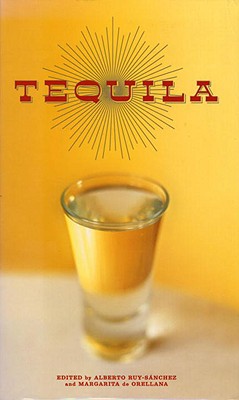Tequila
Tequila is a national drink of great variety and complexity, inextricably entwined with the history and culture of Mexico. Tequila is the first book in English to explore fully what has been called “that burning river in a small glass.” The book is a wonderful guide to everything you need to know about tequila, from 21 background questions and answers, to an A-Z illustrated description of all the tequila brands from the most common to the rarest, to a collection of recipes, not only for...
Search in google:
Tequila is a national drink of great variety and complexity, inextricably entwined with the history and culture of Mexico. Tequila is the first book in English to explore fully what has been called “that burning river in a small glass.” The book is a wonderful guide to everything you need to know about tequila, from 21 background questions and answers, to an A-Z illustrated description of all the tequila brands from the most common to the rarest, to a collection of recipes, not only for cocktails but also for tequila shrimp. Accompanying this practical information are thought-provoking and entertaining articles on the history of tequila making, from the Aztecs through colonial times to the present; a look at tequila in the movies and in literature; and poems, poetic evocations, and a short story by Laura Esquivel, the acclaimed author of Like Water for Chocolate, written especially for this volume. Publishers Weekly If you think tequila comes with a worm in the bottle and is best downed with lime juice and salt in a margarita, you'll definitely learn a thing or two just leafing through this browsable, illustrated monograph. Ruy-Sanchez and de Orellana outline the fundamentals: tequila is made only from a particular agave plant, the Agave tequilana Weber, blue variety. Its three basic styles-blanco (clear), reposado ("rested") and anejo (aged at least one year)-are all wonderful for sipping straight. A different agave produces pulque (a spirit uncommon in the U.S.); still others are distilled for mezcal. While indigenous people were fermenting and drinking agave juices long before the Spanish invaded Mexico, it was the Spanish who brought the technique of distillation (using the Arabic still) to the Tequila region, which lies between Guadalajara and San Blas on Mexico's Pacific coast. In addition to the history and method of tequila production, chapters cover tequila's role in Mexican film and poetry, the rituals of tequila drinking, and recipes for tequila cocktails and cuisine. The book ends with an illustrated gallery of some 65 notable tequilas, all lovingly described. Even if readers don't care for tequila, this work's luscious layout and sunny graphics are alluring. Some of the color art has been created especially for this volume; other pages reproduce paintings in private collections that feature a retro-Mexican look. All told, it's a lovely literary cocktail. (Dec.) Copyright 2004 Reed Business Information.
\ Publishers WeeklyIf you think tequila comes with a worm in the bottle and is best downed with lime juice and salt in a margarita, you'll definitely learn a thing or two just leafing through this browsable, illustrated monograph. Ruy-Sanchez and de Orellana outline the fundamentals: tequila is made only from a particular agave plant, the Agave tequilana Weber, blue variety. Its three basic styles-blanco (clear), reposado ("rested") and anejo (aged at least one year)-are all wonderful for sipping straight. A different agave produces pulque (a spirit uncommon in the U.S.); still others are distilled for mezcal. While indigenous people were fermenting and drinking agave juices long before the Spanish invaded Mexico, it was the Spanish who brought the technique of distillation (using the Arabic still) to the Tequila region, which lies between Guadalajara and San Blas on Mexico's Pacific coast. In addition to the history and method of tequila production, chapters cover tequila's role in Mexican film and poetry, the rituals of tequila drinking, and recipes for tequila cocktails and cuisine. The book ends with an illustrated gallery of some 65 notable tequilas, all lovingly described. Even if readers don't care for tequila, this work's luscious layout and sunny graphics are alluring. Some of the color art has been created especially for this volume; other pages reproduce paintings in private collections that feature a retro-Mexican look. All told, it's a lovely literary cocktail. (Dec.) Copyright 2004 Reed Business Information.\ \








